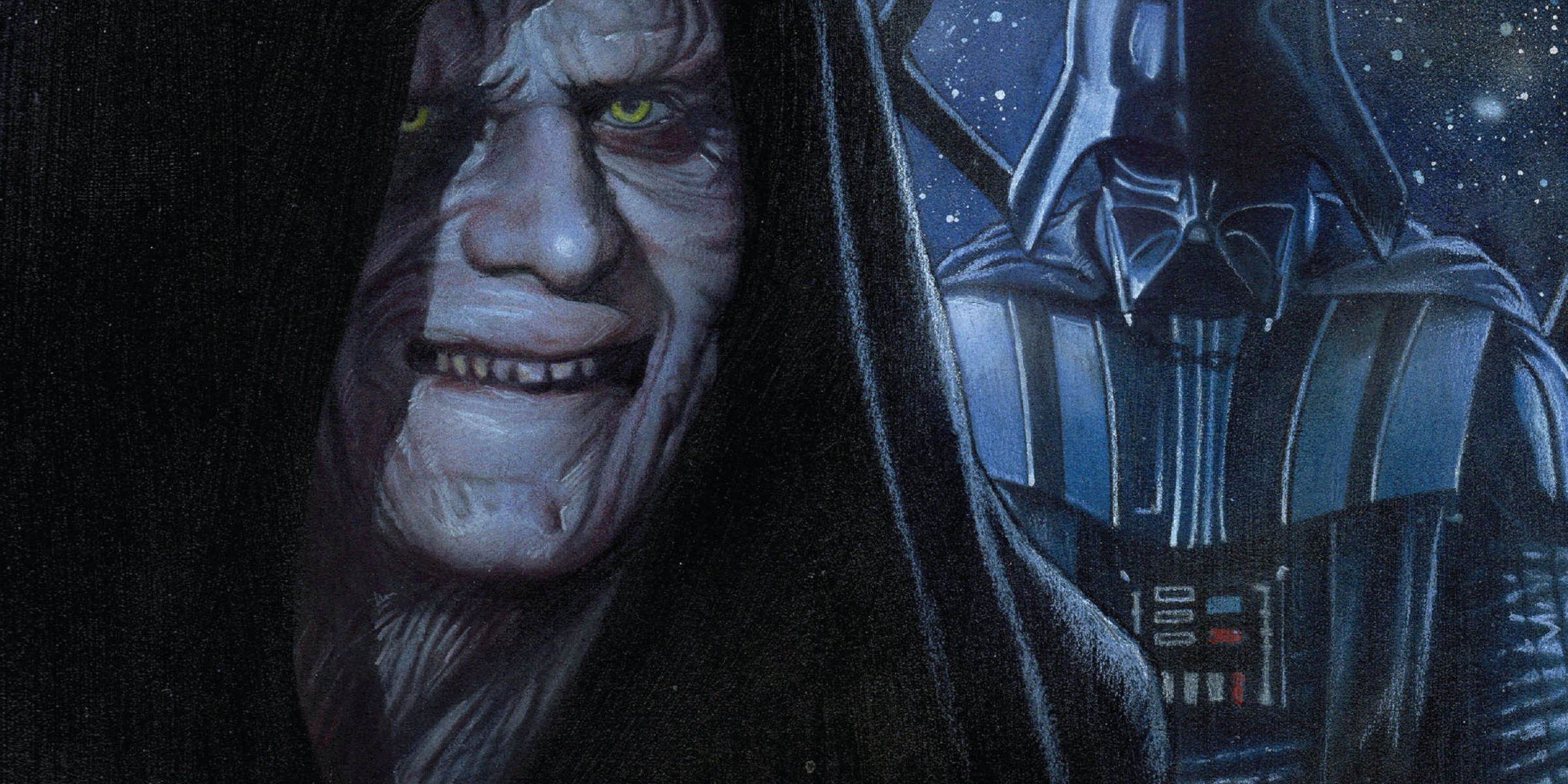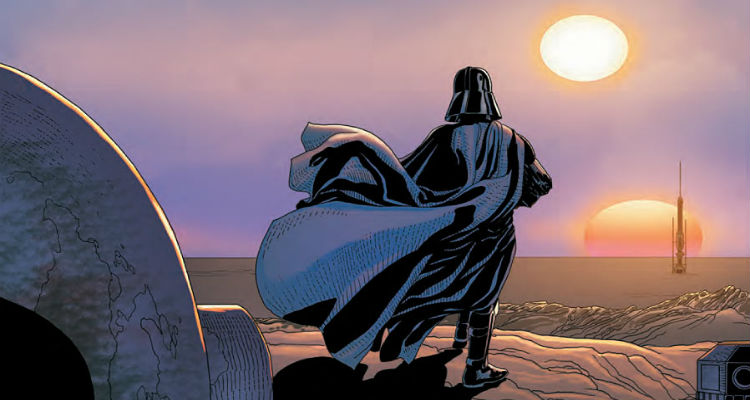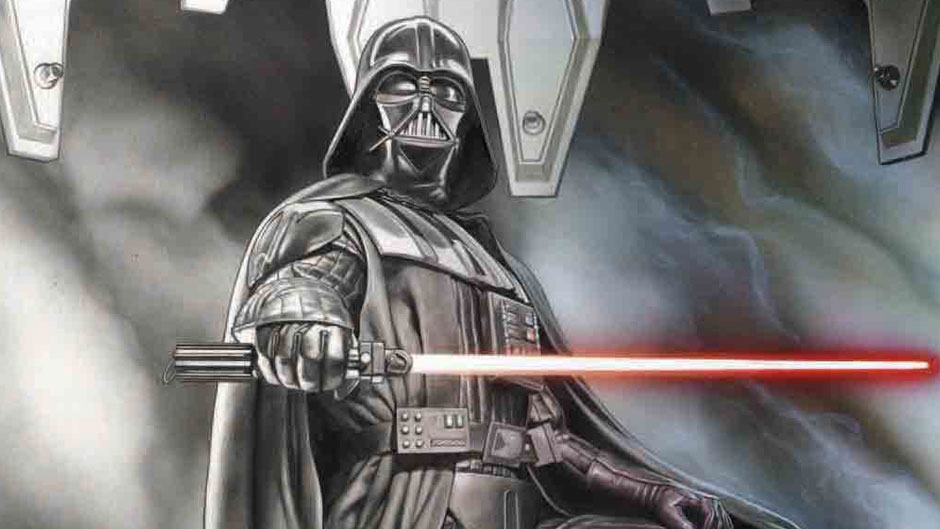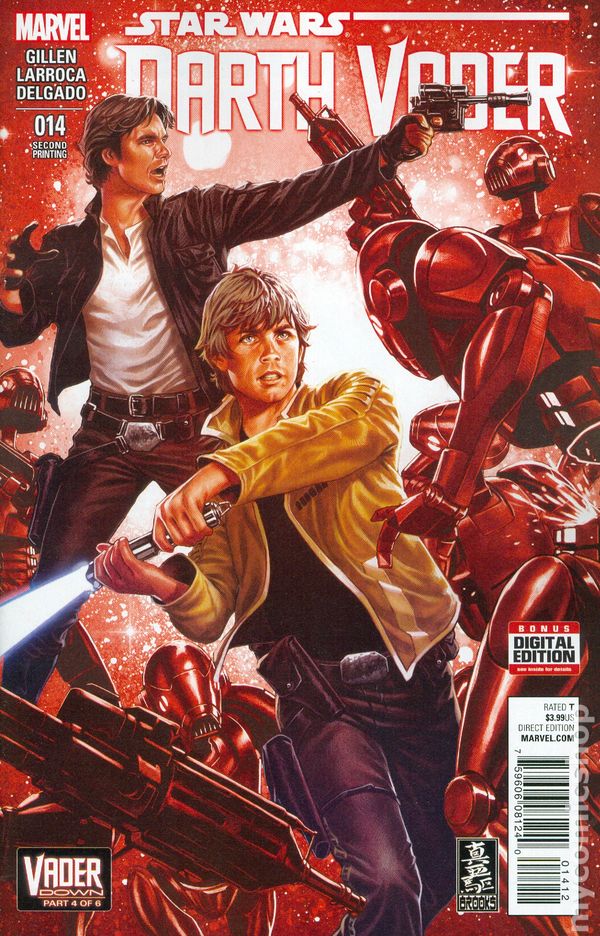DISCLAIMER: This article/review contains MAJOR spoilers for people that have not seen the Star Wars movies/read this comic book. Read at your own risk.
In early 2015, after regaining the license from Dark Horse, Marvel Comics began creating Star Wars comics once again, as a part of the new Star Wars canon, much to the delight of fans of these adventures in a Galaxy Far Far Away. To date, there have been several ongoing series and mini-series. Darth Vader was the second of the ongoing series (after the main flagship Star Wars title) and finally concluded its run in October 2016, after running for roughly a year and a half. Of the series Marvel has put out so far in the Star Wars universe in the new canon, this one seems to be universally lauded by fans and critics alike.
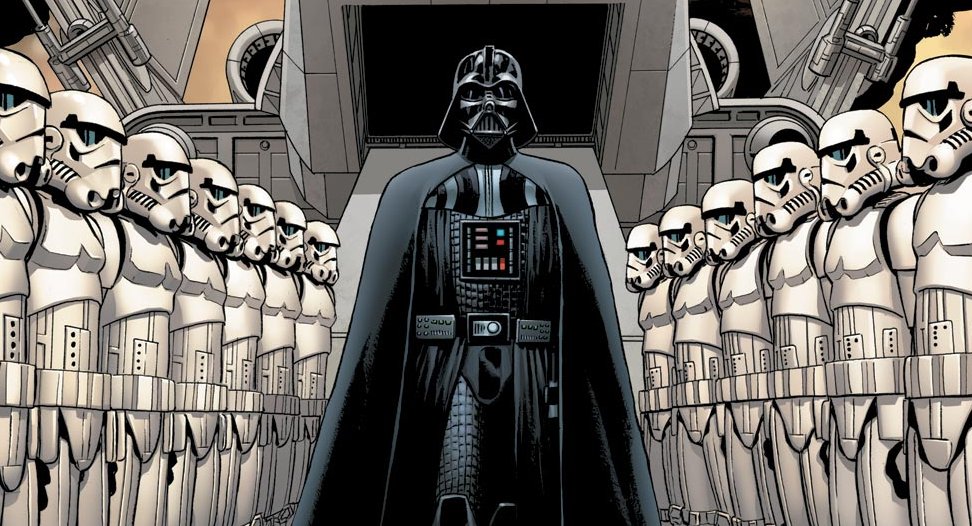
If you are not familiar with what this comic entails, this is the gist of it. Following the events of Star Wars Episode IV: A New Hope (AKA the original 1977 movie) but prior to its sequel, Darth Vader is demoted by his master Emperor Palpatine, for his failure to prevent the destruction of the Empire’s ultimate weapon, the Death Star. The Rebellion is striking back hard against the Empire, and its leader wants Vader to prove and redeem himself following the aforementioned failure. Meanwhile, Vader has his own agenda; seeking out the mysterious Force sensitive pilot that destroyed the Death Star, for his own means.
The central storyline of the Darth Vader comic ran for 29 issues. 25 main issues of Darth Vader, a standalone issue that launched the Vader Down crossover series, two issues of the main Star Wars comic that overlapped as part of the Vader Down crossover, and a one-shot Annual that tied into one of the main story arcs.
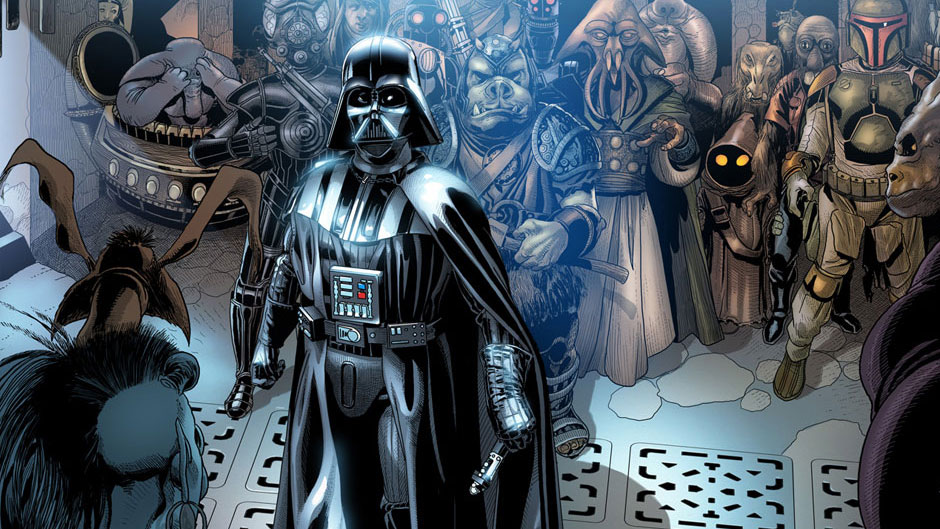
The breakdown of the story arcs is as follows:
Book I: “Vader.” Issues 1-6.
Vader is demoted by Emperor Palpatine following his failure at the Battle of Yavin, to protect the Death Star from destruction. To prove himself to his master, Vader sets out to deal with the Empire’s enemies, but sets out on a side mission of his own. That, of course, being finding the mysterious Force sensitive pilot that destroyed the Death Star. Vader recruits the help of droid archaeologist Doctor Aphra, who helps him to build his own secret droid army, along with what are essentially evil, homicidal versions of C-3PO and R2-D2. Vader discovers the existence of a mysterious Imperial scientist called Cylo, who has been creating potential “replacements” for Vader to become the Emperor’s apprentice, much to his disgust. He also enlists the help of bounty hunters to help find the identity of the Death Star’s destroyer… and is shocked when he discovers the truth.
The first arc of the Darth Vader comic series starts things in fine form; not an easy task considering how difficult it is to create a good story set in the Star Wars universe. But this looks and feels like the Star Wars universe we know and love from the films, maintaining many classic elements while bringing in a number of exciting new ones. These issues served as our introduction to the Doctor Aphra character and her murderous droids, all of whom have long since become fan favorites. With action and psychological drama alike, the first book of the comic gets things off to a great start.
Book II: “Shadows and Secrets.” Issues 7-12.
Vader continues his undercover operations, crossing paths with Cylo’s creations and continuing to carry out the wishes of his master. But his secrecy is placed in jeopardy when Grand General Tagge assigns the mysterious Inspector Thanoth to keep an eye on his activities; this being one brilliant mind Darth Vader did not think he would have to deal with. As Vader and Aphra continue to investigate the mystery of Vader’s son still being alive, our favorite Lord of the Sith is forced to take desperate measures to keep his activities a mystery, both from Thanoth and the Emperor. The rivalry and bitterness between Vader and the replacement potential apprentices created by Cylo becomes stronger, with one of them plotting a deadly trap.
The second arc of the Darth Vader comic is not as satisfying as the first, but does keep things moving along in fine form. The overlapping investigation plots and secret missions of Vader and Aphra are interesting, but at times it feels like a bit too much. The arc does, however, introduce the Inspector Thanoth character, another original creation of the comics who definitely became one of my favorites, only adding to the suspense here. Overall the good outweighs the bad, and the second arc is still entertaining in the long run.
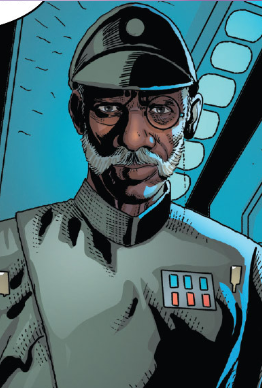
Crossover Series: Vader Down. Vader Down standalone comic, Star Wars 13-14, Darth Vader issues 13-15.
In this crossover with the main Star Wars series, Darth Vader is stranded on the world of Vrogas Vas, following Luke Skywalker taking him down during a Rebel training mission. As the world is home to a Rebel base, Princess Leia and company do everything in their power to end Vader’s life once and for all. But as the Rebels quickly discover, backing Vader into a corner is not exactly a smart idea. Meanwhile, Commander Karbin, one of Cylo’s creations, comes to Vrogas Vas with his own plans for Vader and his estranged son.
It is a bit predictable, but Vader Down manages to deliver some of the best action seen in the Star Wars comic books so far. Rebels have Vader cornered, but you can more or less imagine how things are going to turn out for them. There are some great scenes, including Vader going head to head with Commander Karbin, and some superb drama with our favorite Rebellion heroes. It ends about how you would expect, but this book is definitely satisfying for fans.
Book III: “The Shu-Torun War.” Annual and Issues 16-19.
Prior to the events of Vader Down, Darth Vader had been sent by Emperor Palpatine to resolve issues on the mining world of Shu-Torun, when their king had been failing to meet the quotas of ore mining required by the Empire. Vader and his faithful “Murder Droids” kill the king and put his daughter, Trios, in command of the world, impressed by her spirit and resolve, provided she continues to loyally serve the Empire and meet their goals. Following the events of Vader Down, he is sent back to the world when it is found that the Dukes and Barons are rebelling against the Empire. Vader goes with Cylo and his creations to aid and assist Trios in the battle. But there is plotting going on within the Empire, with traitors that would like nothing more than to see Darth Vader not leave Shu-Torun alive. Meanwhile, Vader hires bounty hunters on the side to capture Doctor Aphra, who has been taken prisoner by the Rebels.
The Annual does a great job introducing the world of Shu-Torun and this arc as a whole. As the main arc only ran for four issues, it had to be a slightly more condensed arc compared to earlier ones, but that does not make it any less satisfying. The shorter length actually helps in a way, resulting in filler free storytelling that is largely comprised of action, and Cylo’s scheming. It is one of my favorite parts of the Darth Vader series as a whole, in that this is more or less Vader doing his “day job” as the Emperor’s enforcer. It also leaves the planet’s fate ambiguous, meaning this may be a location we return to in Star Wars media down the road.
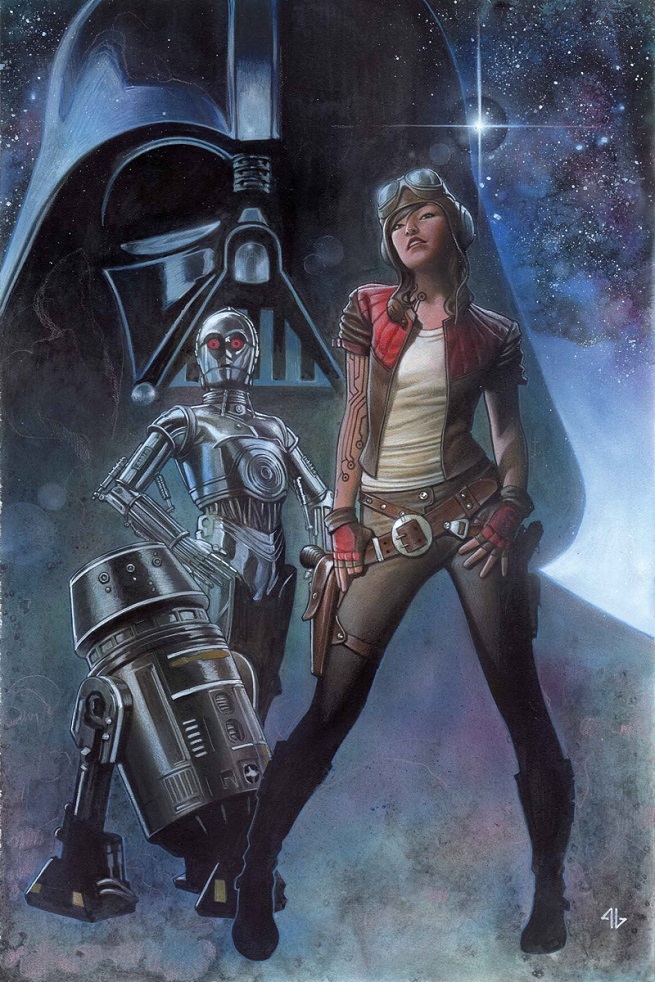
Book IV: “End of Games.” Issues 20-25.
Darth Vader returns to Emperor Palpatine aboard the Executor, a Super Star Destroyer under construction that is set to be Grand General Tagge’s flagship upon its completion. The Emperor reveals his true intentions, and upon revealing Tagge, Cylo, and their followers to be traitors, sends Vader to do away with them once and for all. But Cylo still has a number of his creations ready to battle the Dark Lord of the Sith, and has found a way to achieve apparent immortality. Will Vader triumph over this foe?
Naturally, a story revolving around Darth Vader would have to have a dramatic, spectacular arc that closed things out, and “End of Games” does not disappoint, featuring Vader’s battle against Cylo and his villainous creations. We even get an intriguing look inside of the psychological battle going on inside of Darth Vader’s mind between the dark and the light, which is one of the more interesting and unexpected elements of the comic. The conclusion, of course, leaves us with a confident and determined Vader, who has certainly more than redeemed himself in the eyes of the Emperor. And we even get an ending that gives us optimism towards Doctor Aphra’s future, who will be appearing in her own comic series in the near future.
Wow. That’s a lot of Darth Vader storytelling to go over! But overall, it is worth mentioning that Marvel’s teams here have outdone themselves. Shortcomings are minor, and the tale is one worthy of the Dark Lord’s greatness. New and old characters alike get a chance to shine here, and the overall feel is authentic to the Star Wars universe. I had my skepticism when I heard that these new stories would be a part of the official Star Wars canon, but with only a few exceptions, Marvel’s team has delivered. Not only with Darth Vader, but with the flagship Star Wars title and the good majority of the others. It is truly an exciting time to be a fan of the franchise, largely thanks to Marvel’s work.
After having read all 29 issues worth, I thought it might be fun to share some of the best elements of the series, and the things I thought could have been done better (these lists are in no particular order).
THE GOOD:
-Vader himself.
This goes without saying. The characterization is true to the movies and other media; he remains a deadly villain, yet a complex character facing his own inner struggle. It is interesting to see his investigations that ultimately lead him to Cylo’s creations, as well as the discovery that the Rebel pilot who destroyed the Death Star is his son, which ties in well to The Empire Strikes Back.
-Doctor Aphra.
The comics have introduced many new characters. Some have been throwaways, but there have also been a few that have become instant classics that I am eager to see more of in future Star Wars media. Aphra comes of as something of an evil, female sci-fi version of Indiana Jones, complete with a few classic homages to said character. This is someone who is certainly not one of “the good guys,” but I found myself smiling every time I read her dialogue.
-The “Murder Bots.”
Call these droids whatever you want, along with Doctor Aphra, they were one of the most fun and entertaining new additions to the Star Wars mythos. I was laughing nearly every time Triple Zero opened his mouth, and yet, he never felt overly contrived or shoe-horned in. Of course I look forward to seeing them show up in the Doctor Aphra comic!
-A shared universe.
Marvel, and the Lucasfilm Story Group at large, have impressed be with their new Star Wars Expanded Universe canon, with characters showing up in multiple comic series, comic characters showing up in the novels, and vice versa. Everything comes together nicely; it is good to see a sense of continuity and consistency that the old Expanded Universe (now called “Legends”) lacked, largely since George Lucas ignored it when he made the Prequels. The group has done a solid job, and Marvel’s team that worked on Darth Vader added to this beautifully.
-Integrates elements from the Classic Trilogy AND the Prequel Trilogy, without feeling forced.
This is also true of many of the other Marvel Star Wars titles, but Darth Vader might do it better than any of the others. We see a visit to Geonosis, flashbacks to Vader back when he was Anakin, Battle Droids and Destroyer Droids being used by space pirates, and even an interesting look inside of Vader’s own psychological battle. There are even a few things that could potentially be considered hints of what would come later in the Star Wars universe, including the First Order of The Force Awakens.
THE BAD:
-Cylo’s creations.
This sounded like one of the coolest possible ideas to come from this comic; an evil scientist creating androids that Vader would have to prove himself against if he wanted to remain the worthy apprentice at the Emperor’s side. But aside from the Commander Karbin fight in Vader Down, most of the dealings with them are anticlimactic and are over with quite quicky; a disappointment when you consider how much suspense was built up over the course of so many issues.
-Occasionally lacks focus and has too much going on.
This is mostly true in the latter half of the “Shadows and Secrets” arc, and there are times where Doctor Aphra’s presence more or less overshadows that of Darth Vader himself, with her being overemphasized in a few books/stories/arcs. But that is just all the more reason I eagerly await her own comic starting later this year.
-First issue expects you to have read the first three or so issues of the flagship Star Wars title.
This has to do with a plot that ties into the beginning of the comic.
Overall, any reservations I have in regards to the Darth Vader comic are minor. If you are at all a Star Wars fan, you owe it to yourself to read this one. Absolute highest recommendations.


